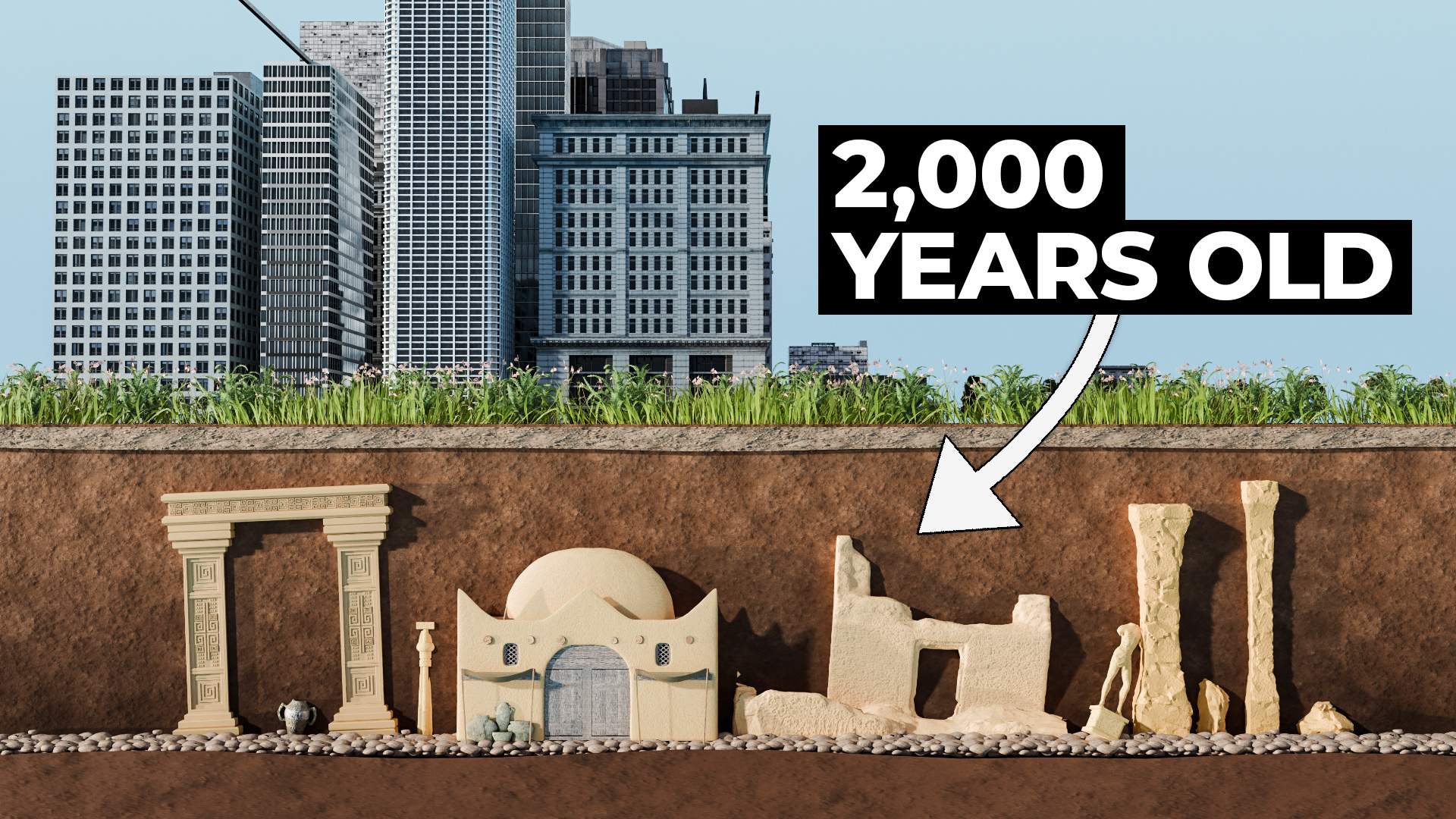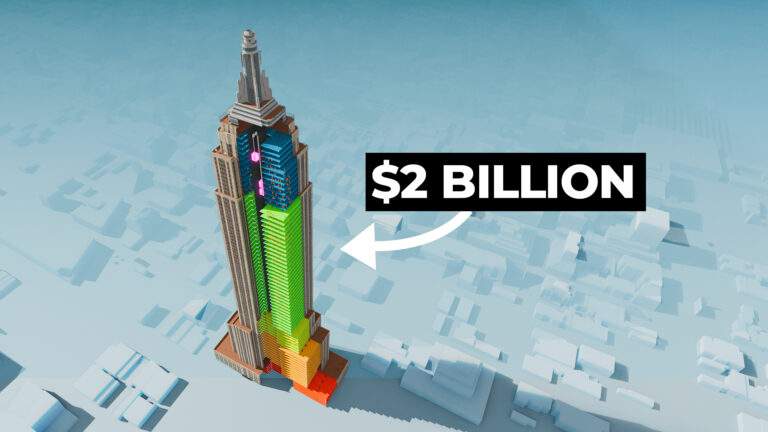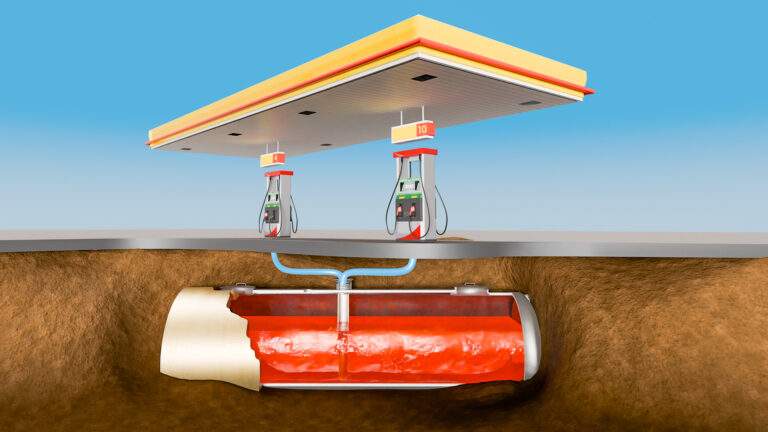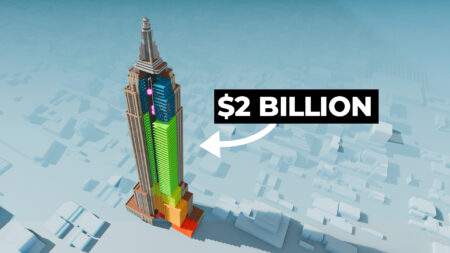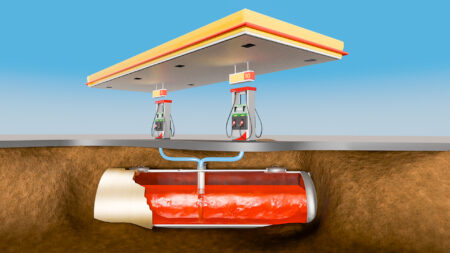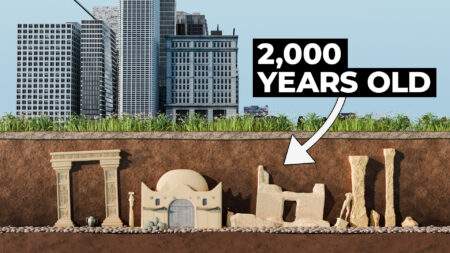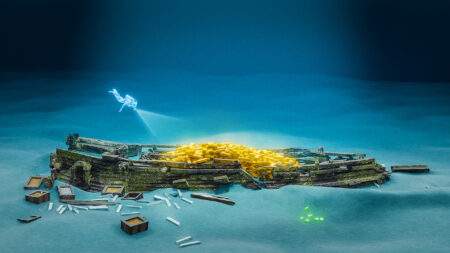This is what the Roman Forum looked like in 1864. When archeologists started digging here, they uncovered an entire world of ruins deep underground that hadn’t been seen for centuries. Rome had simply built everything on top of its ancient city. Over time, the city had risen by more than 10 meters, and older buildings had been completely forgotten about.
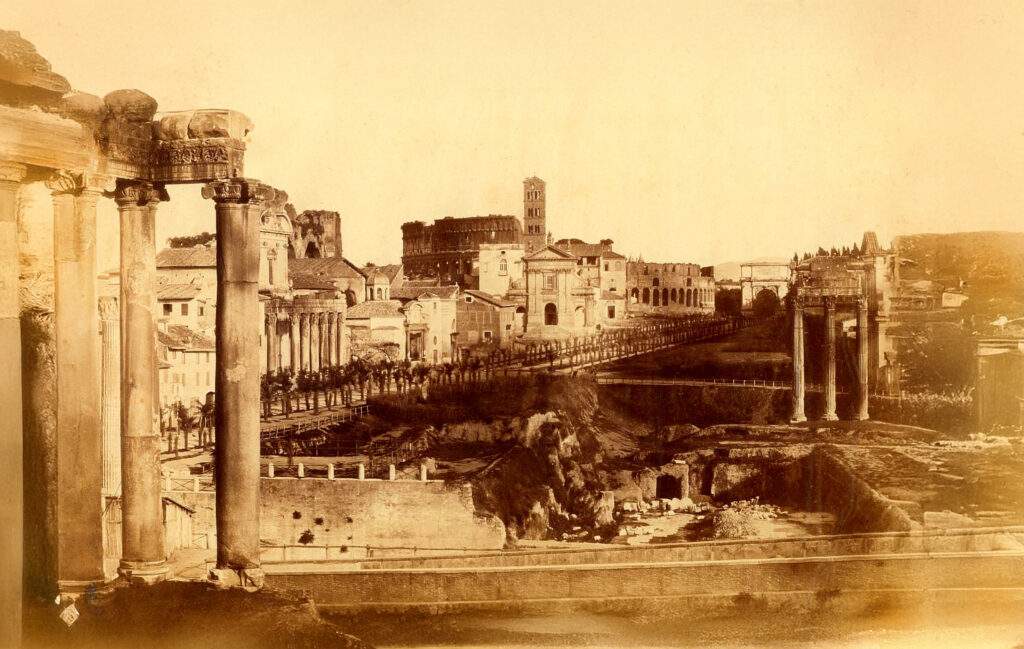
All over the world, you’ll find ruins that are slowly being left behind by the constant rise of the streets, and modern cities that have been built on top of old ruins. The ancient city of Troy was rebuilt 10 times, forming 10 distinct layers all built directly on top of each other. Even the city of Seattle has an entire network of mysterious abandoned shops and houses buried beneath the modern streets.
But why are cities built on top of each other? Is the street level actually rising? And why does history always end up buried deep underground?
In this article, we’ll show you how civilizations build on top of each other. We’ll also look at the crazy historical layers beneath Rome, these strange hills all over the middle east, and the mysterious city, purposefully buried beneath Seattle over 100 years ago.
Layers of Rome
There is no single reason why cities are built on top of each other. After the great fire of Rome in the 1st century, most of the city had to be rebuilt. But instead of clearing away the rubble, it was quicker and easier to simply flatten it out and build on top. This meant that the new buildings were about a meter higher than the street.
And so, to match the new height, the streets were raised and resurfaced, using rocks from the surrounding debris. With every fire and natural disaster that occurred, this process would repeat itself, raising the city and leaving old ruins buried underground.
The Palazzo Pio is built on the remains of the Temple of Venus, which was part of the Theatre of Pompey. Its layout perfectly aligns with the shape of the northern part of the Temple of Venus, which can be seen in the figure below.
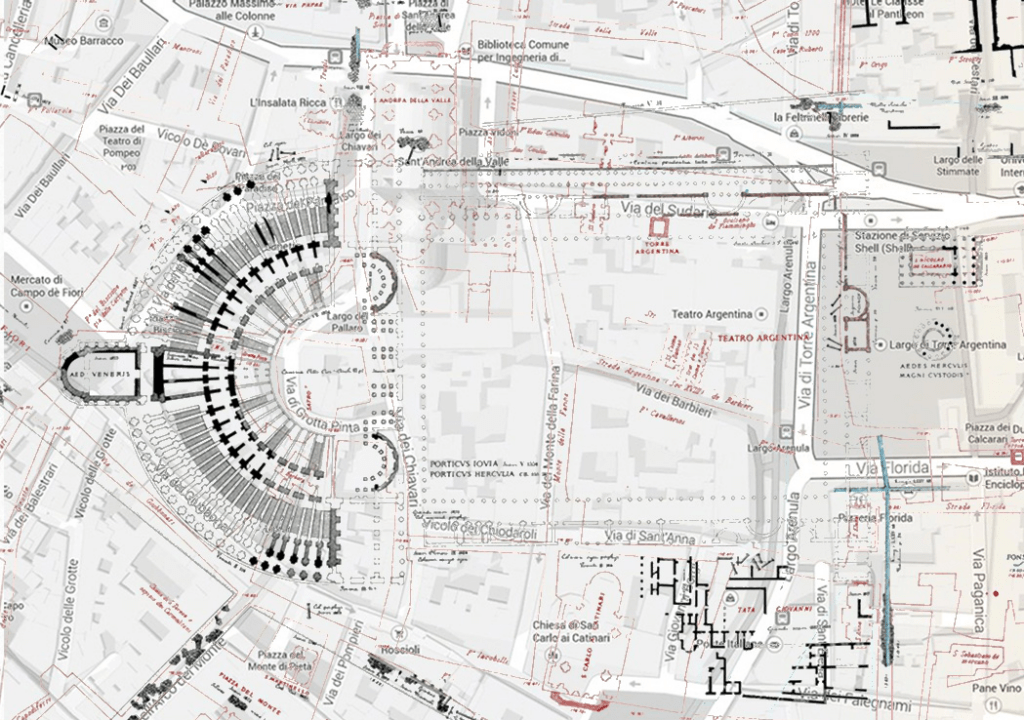
Although it’s unclear why the Temple of Venus was destroyed, we know that the Orsini family bought the land in around 1150 AD and built a large palace that incorporated the remains of the old temple.
Bits of the old temple are still visible in the building. One such example is the column that is seen in Figure 9, which is part of the basement of Palazzo Pio which is now occupied by a restaurant.

Basilica of San Clemente layers
One of the clearest examples of this is the Basilica of San Clemente in Rome. The structure we see today is from the 12th century, but it was built directly on top of an old church from the 4th century. That church was built directly on top of a mysterious old temple, and that temple was built on top of an old house – and there are even older ruins beneath that. All in all, the valley in which San Clemente lies is now 18 meters higher than it was in the first century. Here’s what happened.
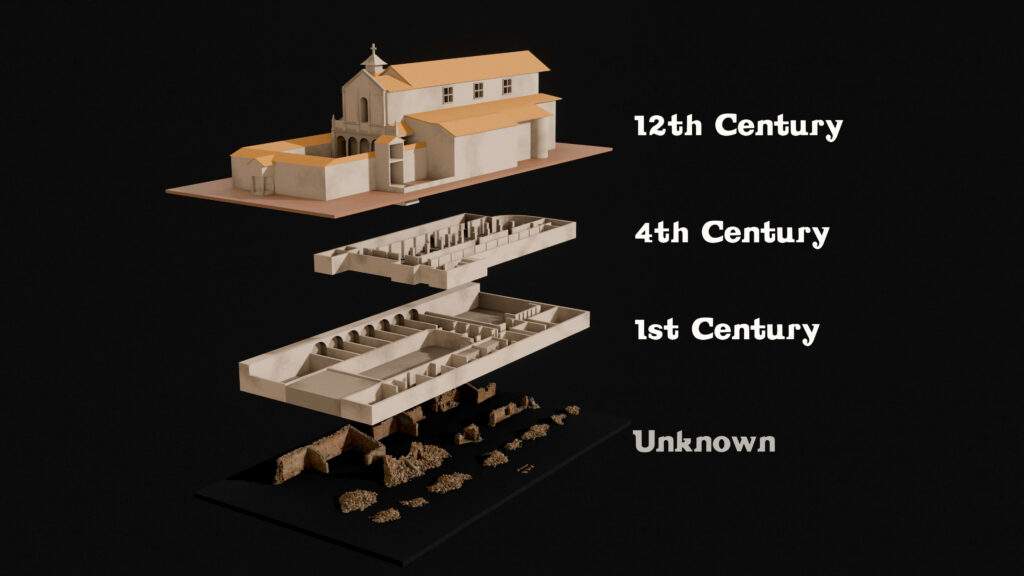
Back in 1st century Rome, before the Colosseum was built, a Roman villa sat at the bottom of the valley. After being damaged in the great fire of Rome, it was converted into a temple by the Mithra people, a mysterious cult which was gaining popularity throughout Rome.
But by the end of the 4th century, the temple was partially destroyed by the Christians. Looking to promote their religion, they decided to build a new basilica on top of the old temple. This basilica served the Christians for another 800 years – but by the 12th century, it fell into disrepair.
After multiple fires and rebuilds around the basilica, the street level had risen considerably. And so, instead of knocking it down, a new basilica was built on top – this is the one we see today. Eventually, the ruins beneath the basilica were filled in, and because no one kept track, all knowledge of the previous layers was completely lost. But in the 1800’s, an archeologist started digging, and unearthed the old basilica with a staircase leading down to the 1st century temple.
We’ve seen how Rome is built almost entirely on old ruins. But one of the best examples of a layered city dates back to a time long before Rome ever existed.
River flooding
Rivers can deposit sediment and debris throughout nearby cities when they flood, causing the ground to build up and abandoned buildings to be covered.
Rome itself was built on the River Tiber, which used to flood frequently. Every time the river flooded, it would carry sediment throughout the city. This sediment would build up with time, eventually raising the ground in some areas and covering over old ruins.

In the picture above, you can see a cross section in a river showing 6 different civilizations built on top of eachother in China. The lowest point we see is from the Yuan dynasty in the 14th century, but that’s not even half way down all of the layers. Lower layers were found that date back to cities in the Warring States period.
Rivers flood, that’s literally half of human civilization history. with flooding (and even just normal flowing) comes sediment accumulation, which both helps the area around those rivers become the cradle of civilization but also the potential for cities to be swept below.
In some locations throughout history, the street level was known rise as people through their waste onto the street. Over tie, this would disintegrate, turn to dirt and raise the street level to a point where parts of buildings were hidden.
Archeological Tells
All over the middle east, you’ll find these strange looking hills with mysteriously flat tops. These are known as Tells – Tell as in Tel Aviv, which used to look like this. These are artificial hills, formed by centuries of civilizations building on top of each other. Inside each Tel is a world full of old ruins, lost in time.
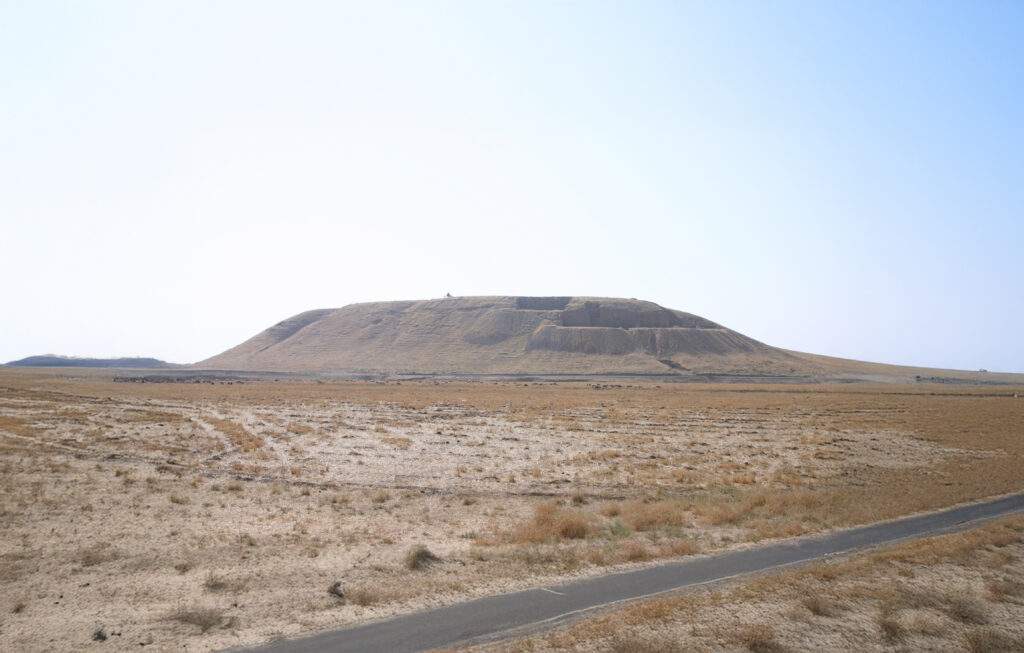
Layers of Troy
Perhaps one of the most impressive of these is the ancient city of Troy, which first began as a small settlement back in 3000 BC. The buildings were mostly made from mud bricks, and when they were destroyed, the material decomposed and covered the ruins in soil. Then, a new settlement came along and built on top.
Over the following millenia, 8 more civilizations took over this mound, going from the Persians to Alexander the Great and eventually the Romans. Each layer made significant advancements up until the year 500 AD, when the nearby port dried up and the last civilization left the city.
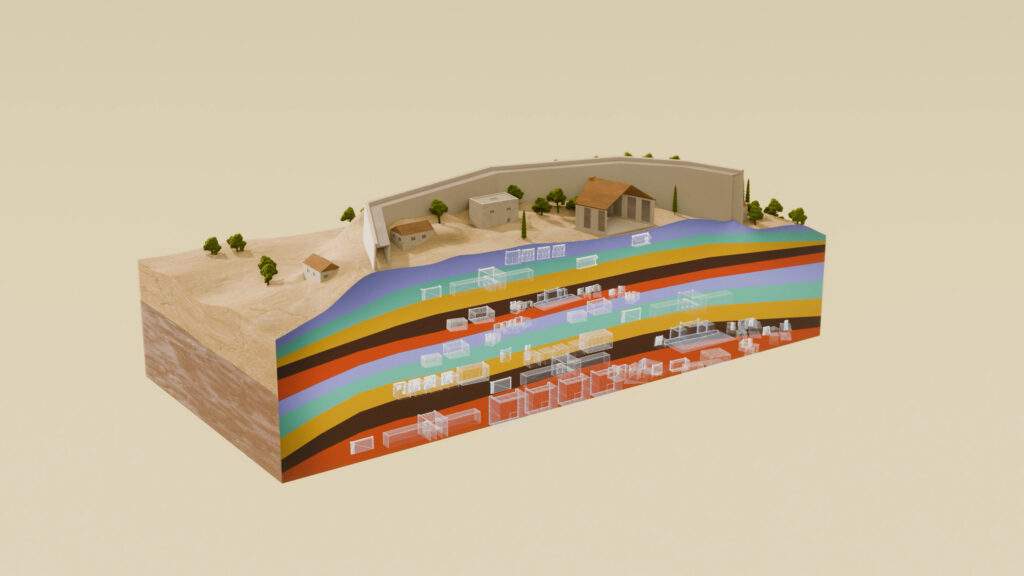
Eventually, the buildings crumbled back into the hill, and the soil took over, making Troy a complete mystery until it was discovered in the 1800’s.
In most cases, humans are the main cause of layered cities. But there is something we haven’t talked about yet. What happens when buildings and cities literally sink into the ground?
Sinking cities
Did you know that Shanghai is currently sinking by around 1 centimeter every year? In fact, most major cities across China are all sinking. For centuries, the only way to get fresh drinking water was to pump it out of the ground. But by doing this, the pores that hold the water are emptied, causing the ground to compress and sink.
This is a problem all over the world – but the soil beneath Shanghai is particularly soft, and with the sheer weight of all the skyscrapers sitting on top, the city has shrunk around 3 meters in the last century.

When cities sink too much, they fall below sea level and end up completely lost. The only real solution to get above the water is to build on top.
That is exactly what happened in Seattle.
Underground city of Seattle
Although Seattle is only 175 years old, it already has an entire network of streets and abandoned buildings hidden beneath the modern city.
In 1889, a devastating fire ripped through the newly formed city, and just like Rome, almost everything had to be rebuilt. The fire at least killed many rats and other vermin, thereby eliminating the city’s rodent problems.
The Mayor took this as an opportunity to drastically improve the city’s design, which already had huge problems with flooding. The idea was to raise the entire city and install drainage pipes underneath the streets, allowing the water to naturally flow out to the sea.
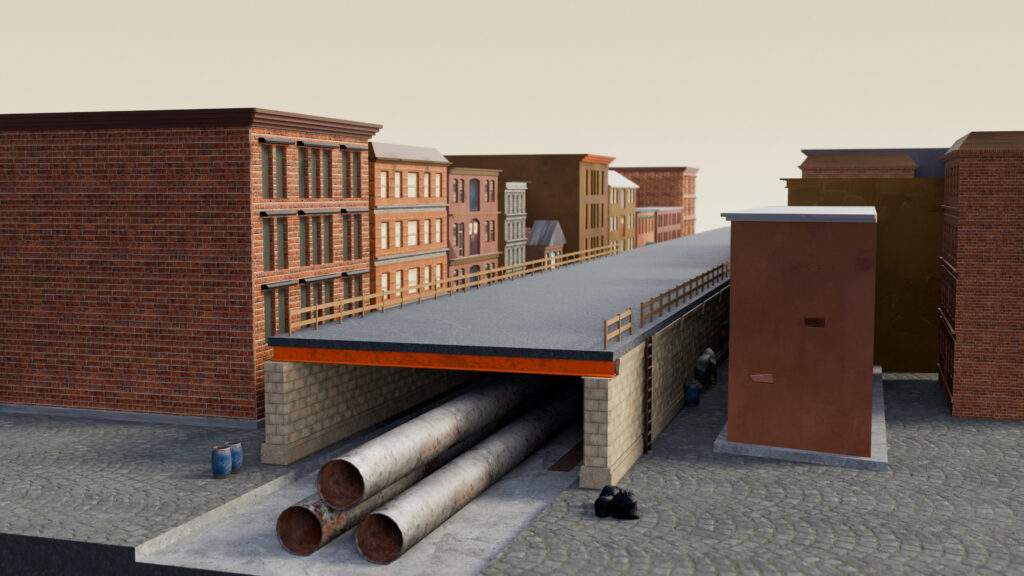
To pull this off, 6 meter-high stone walls were built on either side of the streets, and roads were built on top. For a while, Seattle went through a weird phase where its buildings sat 2 storeys below street level, and people had to descend on ladders to get to shops and houses. Eventually, the gaps were filled in and proper sidewalks were installed, leaving behind a well preserved city right beneath Seattle’s streets.
